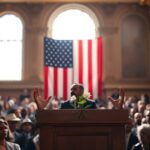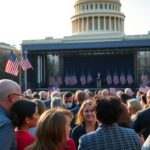Table of Contents
As the government shutdown continues to grip the nation, Senate Majority Leader John Thune is spearheading efforts to bring senators back to Washington. This unprecedented move comes as lawmakers grapple with the challenges posed by the longest shutdown in U.S.
history. The stakes are high, and while there are no guarantees of success, the hope for a weekend miracle looms over the Senate floor.
The context of the current shutdown
The ongoing shutdown has become a pressing issue, affecting countless government services and disrupting the lives of many citizens.
With federal workers facing uncertainty and essential programs on hold, the urgency to find a resolution has never been more critical. Thune’s strategy to keep senators in the capital highlights the determination of some leaders to navigate this crisis effectively.
Pressure mounts on Senate leaders
As the days stretch on with no end in sight, the pressure on Senate leaders is palpable. The need for a compromise that satisfies both parties is essential to restore normalcy. Thune, recognized for his tactical approach, faces the challenge of uniting a divided Senate.
The complexity of the negotiations is compounded by differing priorities among senators, making the path to a resolution fraught with obstacles.
Potential pathways to resolution
In the face of adversity, several potential pathways to resolving the shutdown are emerging. The Senate’s leadership is exploring various proposals that could lead to a bipartisan agreement.
These discussions often revolve around funding allocations and policy stipulations that have contributed to the standoff. By examining the key issues at play, senators aim to identify common ground.
Negotiation tactics and bipartisan cooperation
Effective negotiation tactics are essential in securing a bipartisan agreement.
Thune’s leadership style emphasizes collaboration and open communication. By fostering an atmosphere of trust and respect, he hopes to bridge the gap between conflicting viewpoints. The importance of bipartisan cooperation cannot be overstated, as it often leads to more sustainable solutions in government operations.
Looking ahead: The future of the Senate
The implications of the current shutdown extend beyond immediate concerns. If the Senate can successfully navigate this crisis, it may pave the way for future cooperation on pressing legislative issues. The experience gained during this tumultuous period could serve as a lesson for how lawmakers approach future negotiations. As Thune and his colleagues work toward a resolution, the focus remains on restoring stability for the American people.
Ultimately, the actions taken during this critical juncture will shape the Senate’s reputation and its ability to respond to challenges effectively. While uncertainty surrounds the outcome, the commitment of Senate leaders to find a resolution remains steadfast. The coming days will be pivotal in determining the direction of the government and the well-being of its citizens.





